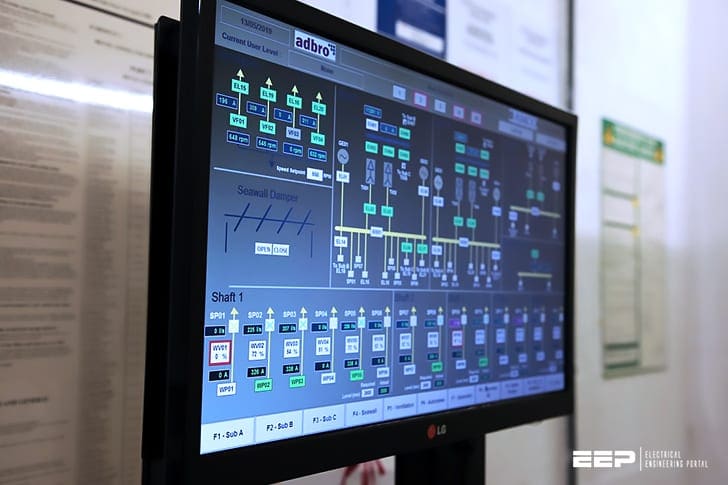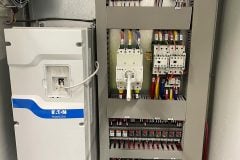Low voltage SCADA applications
At low voltage level, SCADA applications are usually used for process control and monitoring of equipment. Furthermore, incoming circuit breakers or switch disconnectors inside large LV switchboards may also be operated remotely, by the command given from the SCADA working station.

Automatic transfer switch function between several supply sources may also be incorporated into PLC and SCADA applications. Outgoing circuit breakers are rarely controlled remotely, but they can be done as well.
Monitoring of equipment usually assumes collection of following signals:
- Circuit breaker or switch disconnector status (open, closed, trip)
- Contactor status (open, closed)
- Variable frequency drive, or similar device status (ready, run, faulty)
- Various type of protection, e.g. temperature or pressure transformer protection (activated, not activated)
- Temperature inside a switchboard (exact value, or as a binary ok/not ok signal)
- Switchboard door (open, closed)
Inside production plants, treatment plants, and other industrial facilities, process monitoring and control is a major part of SCADA application. Various process-related values are collected from field measuring devices and transferred to PLCs.
Signals from every PLC in the plant are transferred to SCADA station, for the purpose of monitoring and control. All relevant conditions, measurements, and alarms are shown on SCADA screens.
Some, or all available commands towards field equipment, may be given remotely, using the SCADA screen. An example of a simple SCADA system block diagram is given in Figure 1.










